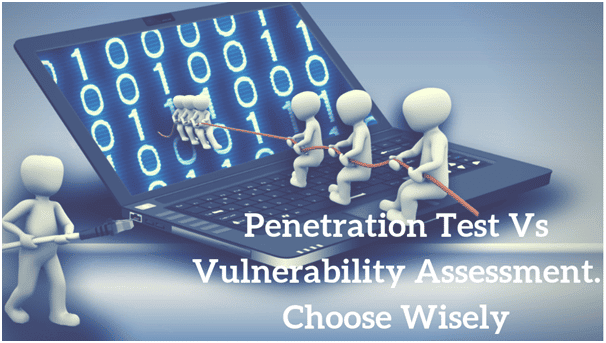
It is definitely surprising that most people take penetration testing for vulnerability testing and vice-versa, sometimes even forego one for the other. Penetration testing exploits vulnerabilities in your system architecture, while vulnerability assessment checks for known vulnerabilities and generates a report on risk exposure. Both penetration testing and vulnerability assessment depend mostly on three factors:
- Scope
- Risk and criticality of assets
- Cost and time
What is Penetration Testing?
An authorized simulated attack on computer looking for systems or networks security vulnerabilities, which might be a cause of leaking information/data to cyber attackers. Often it is confused with vulnerability scan, compliance audit or security assessment however, a penetration tests includes much more processes. The main aim of this process to protect important data from hackers who can have unauthorized access to system. There are various causes of vulnerabilities in the systems, mainly:
- Design and development errors
- Human errors
- Poor system configuration: Physical system security control flaw
A penetration test:
- Does not stop at finding the vulnerabilities of the system. It goes further to exploit the vulnerabilities and show that the system can be breached.
- It effectively answers the question about effective actions taken by IT security team under a real-life breach by simulating the attack
- Answering the real-world effectiveness of security measure is another aspect of tests. Hackers are increasingly evolving methods and hence the cyber security should be upped with the same speed.
- It allows tester to understand systems behavior under multiple attacks on the system.
- Help fix all the identified security flaws.
What is a vulnerability evaluation?
A vulnerability evaluation is the trying procedure used to distinguish and dole out seriousness levels to whatever number security defects as could be expected under the circumstances in a given time period. This procedure may include computerized and manual methods with changing degrees of thoroughness and an accentuation on extensive inclusion. Utilizing a risk-based methodology, vulnerability appraisals may target distinctive layers of innovation, the most widely recognized being host-, organize , and application-layer evaluations.
Directing vulnerability evaluations enable associations to distinguish vulnerabilities in their product and supporting framework before a trade off can occur. In any case, what precisely is a software vulnerability?
A vulnerability can be characterized in two different ways:
- A bug in code or an imperfection in programming structure that can be misused to cause hurt. Abuse may happen by means of a validated or unauthenticated assailant.
- A hole in security systems or a shortcoming in inside controls that when misused outcomes in a security rupture.
Kinds of vulnerability assessments
Vulnerability evaluations rely upon finding diverse kinds of framework or system vulnerabilities, which implies the appraisal procedure incorporates utilizing an assortment of devices, scanners and approaches to recognize vulnerabilities, dangers and dangers.
A portion of the diverse sorts of vulnerability evaluation checks incorporate the following:
- System based sweeps are utilized to distinguish conceivable system security assaults. This kind of output can likewise recognize helpless frameworks on wired or remote systems.
- Host-based outputs are utilized to find and recognize vulnerabilities in servers, workstations or other system has. This kind of sweep for the most part looks at ports and administrations that may likewise be unmistakable to organize based outputs, yet it offers more prominent perceivability into the setup settings and fix history of filtered frameworks.
- Remote system sweeps of an association’s Wi-Fi organizes more often than not center around purposes of assault in the remote system foundation. Notwithstanding recognizing rebel passages, a remote system sweep can likewise approve that an organization’s system is safely arranged.
- Application sweeps can be utilized to test sites with the end goal to recognize known programming vulnerabilities and mistaken setups in system or web applications.
- Database sweeps can be utilized to recognize the feeble focuses in a database in order to forestall pernicious assaults.
Clearly, there is a need for both and hence depending upon the stage the organization is at the type of result expected, the test should be chosen accordingly.